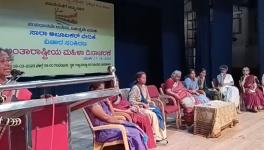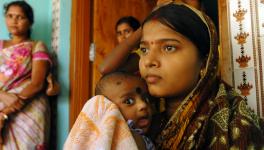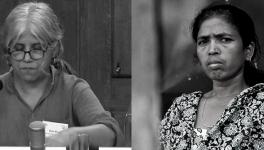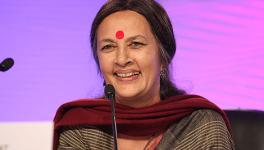Increasing Age of Marriage: Do Women Stand to Gain Anything?
After a five-month delay, the government task force on raising the minimum age of marriage for women to 21 years has submitted its report to the Prime Minister’s Office. The contents of the report and the potential legislation can shape the discourse of gender development in India for many years to come. The government appears poised to attempt to solve deep rooted issues such as maternal mortality and child nutrition using the ‘one size fits all’ solution of raising the minimum marriageable age while sweeping under the carpet the structural realities of Indian society, which deter women's development.
This issue entered the mainstream political discourse on Independence Day last year when Prime Minister Narendra Modi proclaimed that steps have been taken to ensure that ‘daughters’ are no longer suffering from malnutrition and are ‘married off’ at the right age. Six months before this proclamation, Union Finance Minister Nirmala Sitharaman, in her Budget Speech 2020 called for setting up of a task force to review the amendment of the legal marriage age for women from 18 to 21 years. She said there were imperatives of lowering the maternal mortality rate (MMR) and improved nutrition levels and the issue of the age of a girl entering motherhood needed to be seen in this light.
This move is seen as a ‘smart economics’ approach, in which outcomes such as better nutrition and education for children are considered as long-term investments that have several multiplier effects over time. However, this approach starts to become problematic as the benefits bypass women expecting them to assume the stereotypical role of an altruistic caregiver, and hence, counter-intuitively exacerbating the existing structural gender inequalities in our society. According to a recent report published by the State Bank of India, this amendment to the age of marriage will have “tremendous economic and social” gains. The claims made in this report in support of raising the legal age of marriage extend beyond MMR and nutritional levels to increase in education attainment, increase in labour force participation and change towards a progressive mindset.
A multi-country research by Global Network for Women’s and Children’s Health Research in low and middle income countries including India shows that the safest age for pregnancy is 20-24 years, with increased MMR rates outside this cohort. The globally recommended minimum age of 18 for marriage ensures that women enter motherhood in the aforesaid safe zone. Raising the minimum age further by three years does not fulfil the claims it makes regarding improving MMR but rather deigns women incapable of deciding for themselves.
Similar studies recommend introducing education on sex and contraceptives at a younger age to reduce early, unsafe pregnancies for adolescent women. It is also recommended that India needs to strengthen primary delivery institutions with adequate infrastructure, human resources and skilled healthcare providers with the ability to operate in emergency obstetric conditions to limit mortalities in avoidable cases. To lower fertility rates, the government must commit to sustained information programmes pertaining to family planning, improving educational levels and the standard of living instead of making women vessels for achieving national feel-good targets. These policy measures ensure women can exercise their agency and decide for themselves instead of crucial life decisions being decided for them by the state, society or their families.
The claim that raising the legal age of marriage to 21 will increase the chances of women finishing their graduation, makes the assumption that marriage is a definitive reason to discontinue women’s education. It conveniently ignores other structural defects like the affordability of quality education, lack of amenities including separate toilets, and long distances to the nearest school, which might prompt parents to withdraw girls from schools even before marriage comes into the equation. While the decision of the government to raise the legal age of marriage to improve the education of women is unfounded, it is the subject matter of education that should be the target of change. Education that does not accord women with the agency to disrupt existing practices or challenge traditional roles - instead reinforces women’s roles as gatekeepers of patriarchy - is problematic.
The other argument given is that raising the legal marriage age will ensure the entry of girls into the labour force. This again is based on the assumption that women do not enter the labour market solely because of marriage. The other structural barriers such as patriarchal norms in relation to honour and control of women’s mobility, gendered nature of jobs available to women, the secondary status accorded to women - differential wages, sexual harassment, difficulty in accessing social security are overlooked.
Finally, the assertion that changing the legal age will bring about a progressive mindset without addressing the real structural inequalities is wishful thinking. Even historically, Indian women have been instrumental in furthering the nationalist agenda. For instance, during the freedom struggle, the image of ‘bhadramahila’ (respectable woman) was a patriarchal construct in which the woman was expected to maintain the superior spiritual sanctity of home akin to a goddess, while her modern education elevated the lifestyle of the family. Wrought with ‘unfreedom’, Indian women in the 21st century continue to be identified as mothers, wives, daughters, before being identified as a woman in her own right. The rationale for raising the legal age of marriage to achieve national economic and social goals stems from this tradition. When the premise of the very change is for ‘young mothers’, one cannot possibly view it as a step in the right direction for gender parity.
The proposal to raise the legal age of marriage of young women has obvious but counterintuitive benefactors - orthodox Indian men. A study by Partners of Law in Development revealed that in many cases, it is the parents who use legal provisions to nullify marriages of eloped daughters with men outside of caste, class and religious boundaries and to persecute the man. Raising the legal age of marriage for women to 21 can therefore be problematic as an intersectional marriage between consenting adults can be deemed void by law, and the man even booked for statutory rape if the woman has not reached her 21st birthday before the day of her marriage. There is also a legal provision under The Prohibition of Child Marriage Act, 2006 (PCMA) where the court can annul a marriage without need for further legal process when the ‘minor’ woman is “enticed out of the keeping of the lawful guardian.”
Over the last few months, following the enactment of the Uttar Pradesh Prohibition of Unlawful Conversion of Religious Ordinance 2020, other BJP-ruled states have expressed interest to introduce their own versions of ‘Anti-Love Jihad’ laws, which essentially penalise interfaith marriages. The Karnataka chief minister said, he would take ‘strong measures’ to stop young girls being lured in the name of love and being converted to other religions. Meanwhile, Indian Union Muslim League leader Noorbina Rasheed’s letter to the PM argued that the legal marriage age must not be raised as it increases “live-in relationships” and “illegitimate relations”. Such statements and actions reduce women to a binary of ‘pure’ infallible goddesses or helpless victims who must be rescued from bad influence. These beliefs resonate with the male’s ‘benevolent’ sexism which is insecure about a society where women can make their own sexual decisions.
The practice of treating women as a means to an end instead of full citizens is a tested formula that has produced questionable results in the past. Policymakers should stop using women as conduits of development but should rather view them in their own right. Proposing to raise the legal age of marriage is a quick-fix solution and does not ask difficult questions pertaining to women’s agency, their marginalised social standing, existing structural inequities which are manifestations of the patriarchal norms. Even the supposed benefits of this policy can be counterintuitive as raising the minimum legal age of marriage may instead inflate MMR rates as per the aforementioned studies. If India desires a gender-equal society, women must be empowered to make their own informed decisions, without being infantilised by the state which insists on making decisions on their behalf. The government must recognise the power vested in their authority and attempt to ask nuanced questions to design a solution that rises over symbolic gestures.
The author Deepshi Arya ([email protected]) is a Teaching and Research Fellow at O.P Jindal Global University and co-author Akhilan J R ([email protected]) is a student of Masters in Public Policy at O.P Jindal Global University.
Get the latest reports & analysis with people's perspective on Protests, movements & deep analytical videos, discussions of the current affairs in your Telegram app. Subscribe to NewsClick's Telegram channel & get Real-Time updates on stories, as they get published on our website.
























